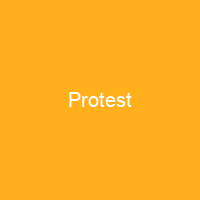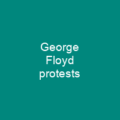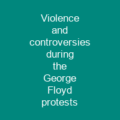Protests: A Public Act of Objection
Imagine a world where every voice matters, but some are silenced by power and privilege. Protests emerge as a powerful tool for those voices to be heard. They are public acts of objection against political advantages or injustices, often organized to make opinions known and influence policy. But how do these protests come into being? What forms can they take, and what factors restrict them?
The Many Faces of Protests
Protests can be as varied as the issues they address. From the 16th-century Protestant Reformation in Northern Europe, which challenged the Catholic Church’s authority, to the American Revolution in 1770s North America, where colonists fought for independence from Britain, history is replete with examples of people standing up against oppression. Even today, we see protests like the Black Lives Matter-led protests on July 13, 2013, and the 2024 Columbia University pro-Palestinian campus occupation.
Forms of Protests
Protests come in many forms. They can be as simple as a rally or demonstration, where people gather to voice their concerns, or as complex as a civil disobedience movement. Thomas Ratliff and Lori Hall have identified six broad categories of protest activities:
- Artistic, dramaturgical, and symbolic displays
- Solemnity and the sacred – Vigils, prayer, or rallies with religious or spiritual focus
- Institutional and conventional – Formal political processes and social institutions (press conferences, lawsuits, lobbying, etc.)
- Movement in space – Marches or parades from one location to another
- Civil disobedience – Withholding obligations, sit-ins, blockades, shop-ins, occupations, bannering, ‘camping’, etc.
- Collective violence and threats – Physical confrontations, verbal threats, property damage, etc.
Direct Action and Beyond
Direct action is a key component of many protests. It includes activities like protest marches, picketing, street protests with handmade placards, lock-downs and lock-ons, die-ins (simulating being dead), protest songs, radical cheerleading, critical mass bike rides, toyi-toyi dance. These actions can be both symbolic and practical, aiming to bring attention to the issues at hand.
Restrictions on Protests
However, not all protests are created equal. Governments, economic circumstances, and media monopolies often restrict or suppress them. For instance, counter-protests may occur, leading to clashes with protesters. Violent protests tend to generate unfavorable coverage, while nonviolent activism tends to produce favorable media attention.
The Power of Social Media
In today’s digital age, social media has become a powerful tool for organizing and amplifying voices. From blogging and social networking to culture jamming, where individuals use popular culture to critique societal norms, these platforms have transformed the way protests are organized and perceived.
The Impact of Protests
Protests can have a significant impact. A 2014 US study found that public activities affected company stock prices, with media coverage being crucial in causing prices to fall an average of 1/10th of a percent per paragraph written about the event.
A Call for Unity and Action
As we look at the history of protests, from the Protestant Reformation to the 2024 Columbia University pro-Palestinian campus occupation, it’s clear that these acts are not just about individual grievances but about collective action. They represent a call for unity and change in the face of injustice.

So, the next time you see a protest, remember that it’s not just about the issue at hand but about the power of collective action. Every voice matters, and every act of objection can make a difference.
The future is in our hands – let us use the tools we have to create a better world for all.
You want to know more about Protest?
This page is based on the article Protest published in Wikipedia (retrieved on March 15, 2025) and was automatically summarized using artificial intelligence.






